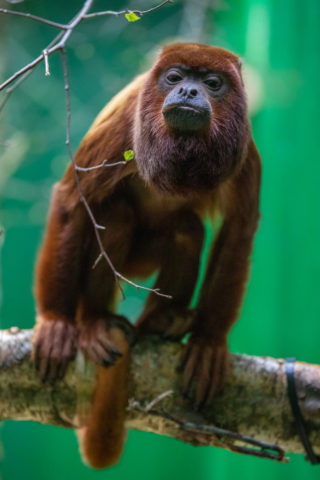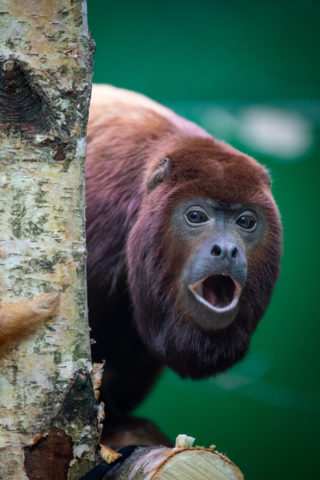Fun Facts
Noisy neighbours
Venezuelan red howlers have large jaws and hyoid bones (the bone that attaches all the muscles in your tongue and throat). This allows them to produce loud vocalisations that can be heard 3 - 5 km away. Howler monkeys are the loudest land animals in the world.
An extra hand
The Venezuelan red howler has a prehensile tail, meaning that it can use its tail to grasp things. The tail acts as an extra hand for grabbing onto branches, leaving its hands free to collect food.
It takes a village
Venezuelan red howler infants are cared for by all the females in a troop. The females without their own babies spend lots of time admiring the newborn infants, gently touching them with their noses.
Four thumbs up!
Venezuelan red howlers grab branches with their thumbs and index fingers on one side and the rest of their fingers on the other side, making it look like they have two sets of thumbs. This gives them a strong hold on branches.


